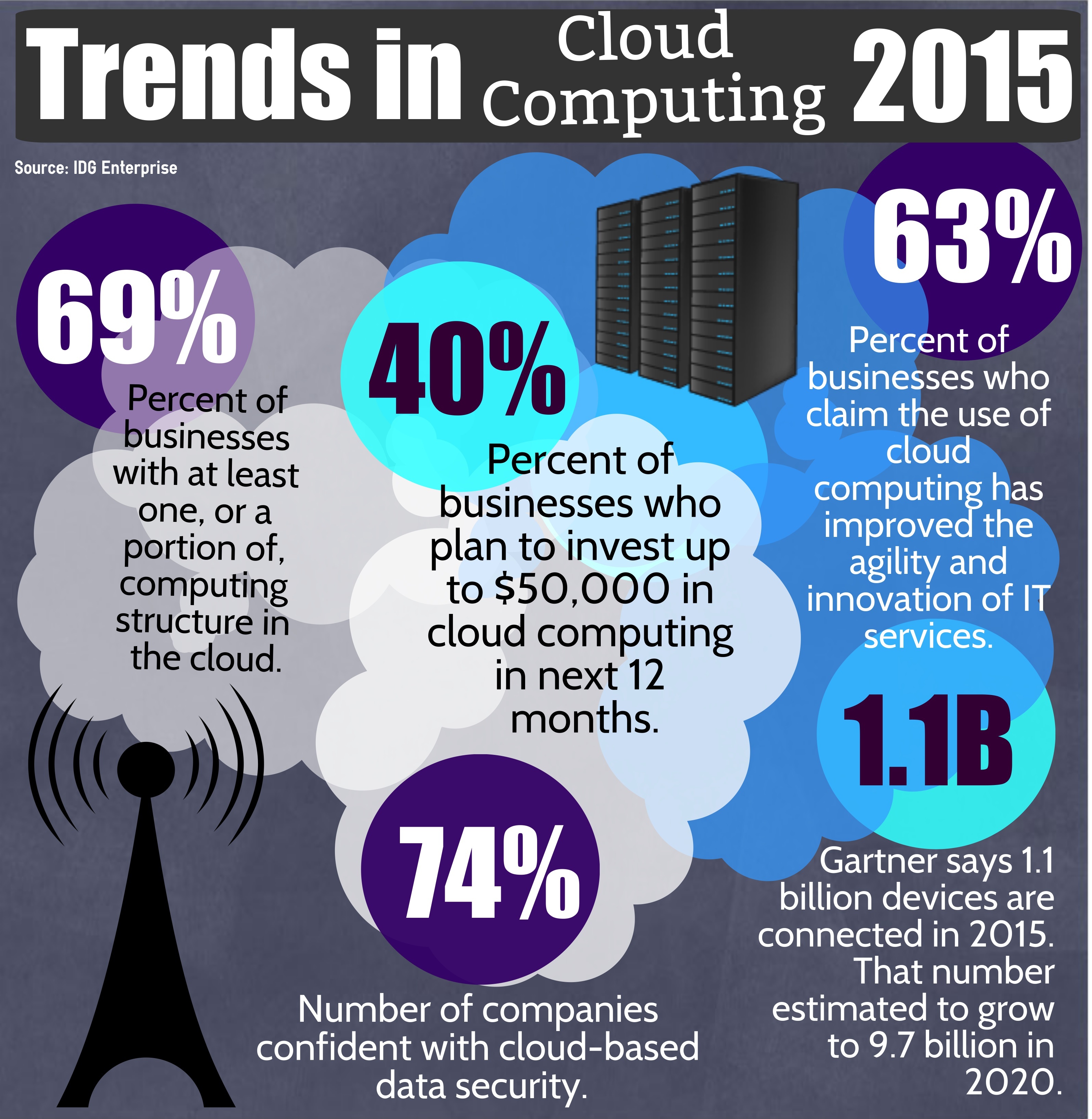Cloud software based infrastructures have become a mainstay of both B2B and B2C industries. The reason? Nearly 90 percent of all consumer data has been created in the last three years. Cloud software technologies are making it easier for companies to better manage this increasing data load while accounting for improved consumer targeting, collaboration, and business analysis enterprise wide.
In an online questionnaire, IDG Enterprise measured cloud computing trends among 1,600 technology decision makers, including usage and plans across different deployment models, investments, business drivers and impact on strategies and future plans. Here are a few trends around cloud software infrastructure that the survey revealed.
Trends
- 69 percent of businesses employ at least one, or a portion of, computing structure in the cloud. The cloud platform is great for businesses of any size. Since most are deployed based on subscriptions, costs are low and paid within the period it is used. It allows decision makers to invest in other areas of the business since they can now avoid upfront costs.Also, since data models are becoming more sophisticated and robust, companies may outsource cloud vendors to manage this growing data remotely; ensuring its compatibility with your system and monitoring its security. The best part about outsourcing data management is that the company is entitled to less risk and accountability if data model errors backlog the system.
- 40 percent of businesses plan to invest up to $50,000 in cloud computing this year. It goes back to the cost factor. Cloud computing infrastructure is priced significantly less than on premise solutions, this means organizations implementing new systems are beginning to make the transition.Some businesses are ramping up digital infrastructure spending in the tens of millions of dollars to accommodate the growing number of IoT devices – mobile, consumer products, and RFID tags — to ensure enterprise ecosystems are robust enough to learn from these new databases.
- 74 percent of companies are confident with cloud based security data; due in part to its multi-channel data flow capabilities. On premise solutions use firewalls and single network access points to flow data in and out of house. It takes a specialized group of cloud security agents to ensure the capture of moving data is in the best interest of the firm.Largely, the biggest security risk for cloud software technologies exist in the same form inside on premise versions of software as well.
- 63 percent of businesses claim the use of cloud software has improved the agility and innovation of IT services. Cloud computing is fast; very fast. Since it runs on web-based architecture, it steams data based on the web service provider’s speed. When business processes are automated, and data modeling is well configured, businesses can perform tasks nearly three times as fast as they could using on premise systems.
- Gartner suggests 1.1 billion devices will be connected this year; with that number expected to grow. It estimated that nearly 9.7 billion devices to be connected in 2020, as well as 25 billion “things” connected to the internet such as consumer goods, wearables devices, and in-store shelving sensors.
Interested in how cloud software can be deployed or integrated into your environment? Contact our Datix cloud software implementation and integration experts today


